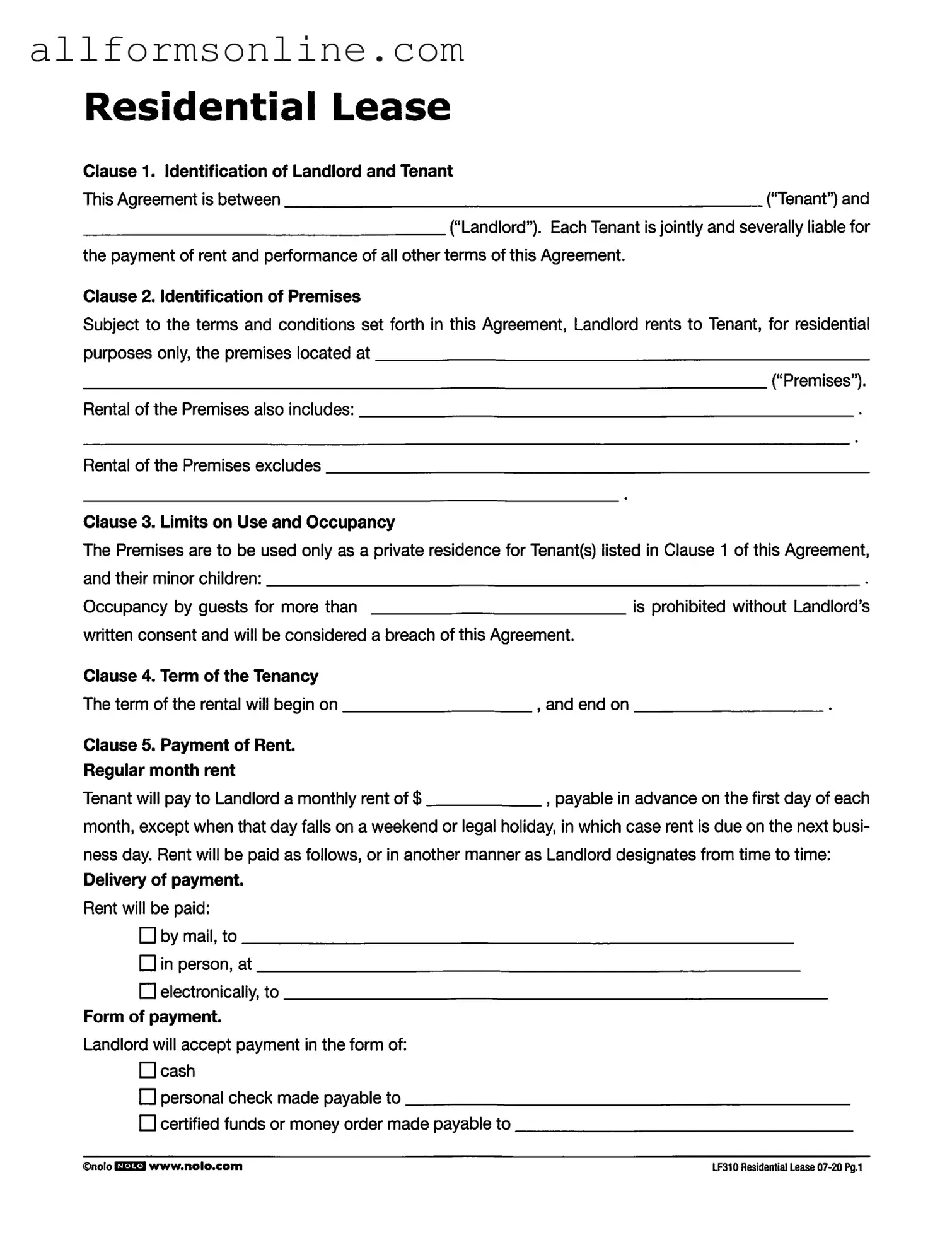What is the purpose of the LF310 Residential Lease form?
The LF310 Residential Lease form serves as a legally binding agreement between the landlord and tenant. It outlines the terms and conditions of the rental arrangement, including identification of both parties, the premises being rented, payment details, and rules regarding occupancy and use. This form is designed to protect the rights and responsibilities of both the landlord and the tenant, ensuring clarity and mutual understanding throughout the tenancy.
What are the responsibilities of the tenant regarding rent payment?
The tenant is responsible for paying the agreed-upon monthly rent in advance on the first day of each month. If the due date falls on a weekend or legal holiday, the payment is due on the next business day. The tenant must ensure that rent is paid in full and on time to avoid late charges. The lease specifies the acceptable methods of payment, which may include cash, personal checks, certified funds, or electronic payments, as designated by the landlord.
What happens if the tenant does not pay rent on time?
If the tenant fails to pay rent in full within the specified grace period, they will incur a late charge. This charge is predetermined and may include an additional fee for each day the rent remains unpaid. The total late charge for any month will not exceed a specified amount. It is important for tenants to understand that the landlord retains the right to demand full payment of rent on the due date, regardless of any late charges incurred.
Can the tenant sublet the premises or assign the lease?
